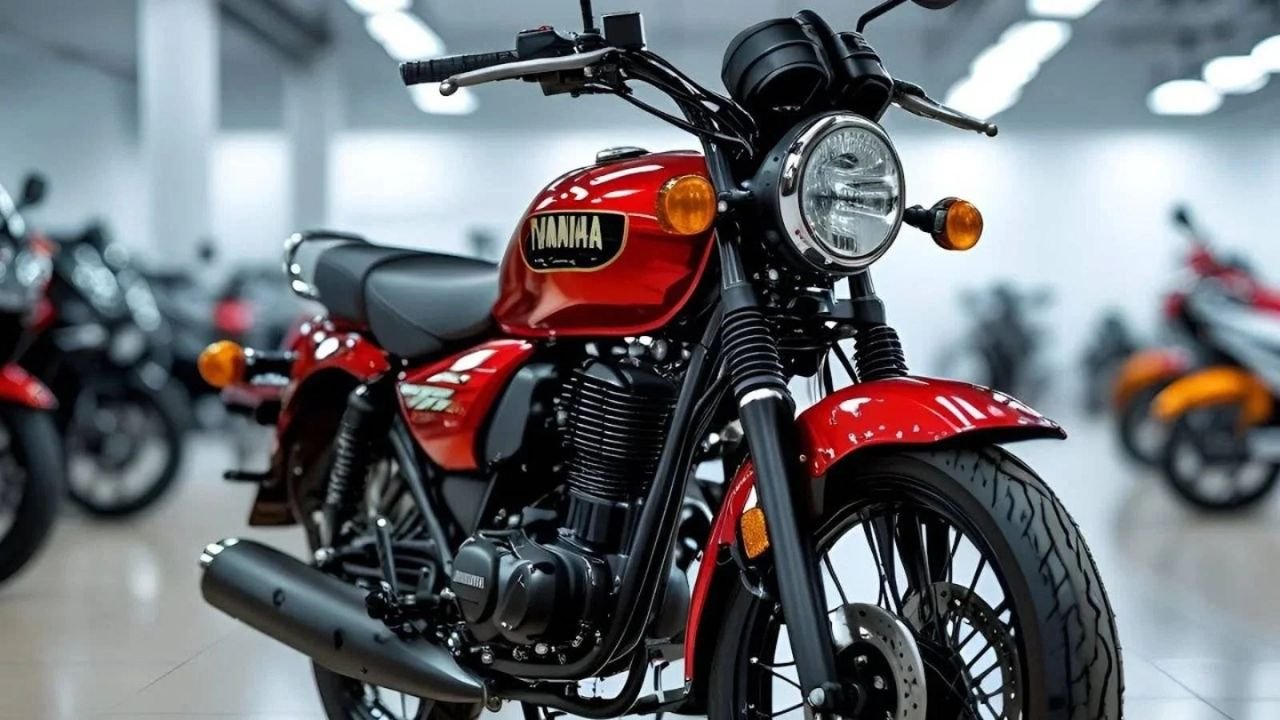Ask any seasoned biker in India about motorcycles that shaped the nation’s two-wheeler history, and one name is bound to come up: Yamaha RX100. More than just a bike, the RX100 was a revolution on two wheels. Unlike today’s motorcycles loaded with digital meters, LED lights, or electronic riding modes, the RX100 thrived on simplicity, raw performance, and pure riding joy. For the generation that grew up in the 80s and 90s, this motorcycle wasn’t just a mode of transport—it was a rite of passage, a symbol of freedom, and an emblem of rebellion.
From its distinctive engine roar to the lightweight frame and aggressive acceleration, the Yamaha RX100 carved an indelible mark in the hearts of Indian bikers. Let’s delve deep into what makes this bike legendary and why it still commands respect among enthusiasts today.
Yamaha RX100 – Key Highlights
| Feature | Details |
|---|---|
| Engine | 98cc, air-cooled, 2-stroke |
| Power | Approx. 11 HP |
| Gearbox | 4-speed manual |
| Weight | Around 100 kg |
| Top Speed | Approx. 100 km/h |
| Brakes | Front and rear drum brakes |
| Fuel Efficiency | 25–30 km/l (depends on tuning and usage) |
| Suspension | Telescopic front forks, swingarm rear |
| Production Years | 1985 to 1996 (Discontinued) |
| Legacy | Cult status for raw performance & sound |
The Yamaha RX100 quickly became a favorite among enthusiasts due to its perfect blend of power, simplicity, and handling. It wasn’t just fast; it delivered speed in a way that felt visceral, immediate, and exhilarating.
What Made the Yamaha RX100 So Special?
The RX100’s charm didn’t lie merely in its speed, but in how that speed was experienced. Its 98cc two-stroke engine may seem modest today, but back in the 80s, it was a true powerhouse in its segment. The engine offered crisp throttle response, instantaneous torque delivery, and a high-revving personality that thrilled young riders.
Equally memorable was the bike’s exhaust note—the unmistakable, raspy “ting-ting-ting” sound that announced its presence on the road. More than just noise, it became a siren call for motorcycling enthusiasts, signaling freedom and excitement wherever it roared.
Its design was another reason for its enduring legacy. The Yamaha RX100 sported a clean, no-frills look with round headlamps, simple bodywork, and classic lines. Its timeless design continues to attract vintage bike lovers, proving that style doesn’t need excess to stand out.
Performance That Set It Apart
When it launched in India, the RX100 didn’t just enter the market—it dominated it. While other motorcycles struggled to balance power and efficiency, the Yamaha RX100 focused on pure performance.
Thanks to its lightweight frame of approximately 100 kg, the power-to-weight ratio was exceptional. Riders often reported accelerating from 0–60 km/h in under 7 seconds—a remarkable feat for a 100cc motorcycle at the time. Its 4-speed manual gearbox was smooth, precise, and engaging, making gear shifts a joy even for novice riders.
The combination of low weight, responsive engine, and agile transmission made the RX100 ideal for city traffic, highway cruising, and even casual drag racing. It delivered a riding experience that modern motorcycles with advanced electronics sometimes struggle to match: simple, raw, and thrilling.
Also Read – Honda Activa 8G Launched 2025 – 85 km/l Mileage, Smart Features & Stylish Design, Girl’s First Love!
Handling and Suspension – Light, Nimble, and Fun
The Yamaha RX100 was designed with practicality in mind while retaining a fun, sporty feel. Its telescopic front forks and twin shock absorbers at the rear handled Indian roads efficiently. While the suspension wasn’t high-tech by today’s standards, it offered enough comfort and control for daily commuting as well as spirited weekend rides.
The bike’s light weight gave it excellent maneuverability, making it easy to weave through traffic or tackle narrow lanes. Its responsive handling created a connection between rider and machine that was almost telepathic. Enthusiasts often describe the experience as a perfect blend of balance, stability, and excitement—an experience that many modern bikes struggle to replicate.
Yamaha RX100 – Why the Legacy Lives On
Though production ceased in 1996 due to stricter emission norms, the Yamaha RX100 remains a cult favorite. Collectors and enthusiasts across India continue to search for vintage models, often spending months restoring them to original condition.
The passion for this decades-old bike is rooted in nostalgia and admiration. It symbolizes an era when riding was pure and unfiltered, a time when mechanical simplicity and raw power mattered more than gadgets. Restoration garages in India thrive on this demand, recreating original paint schemes, decals, and sourcing rare OEM parts. The RX100 lives on, not just in memory, but in functional, road-ready machines.
Racing Roots and Modding Culture
The RX100 was a favorite among tuners and racers. Its simple mechanics and mod-friendly engine made it a canvas for creativity. Enthusiasts often ported the cylinder, installed expansion chambers, and fine-tuned carburetors to extract maximum performance.
Modified RX100s were capable of surpassing 120 km/h, leaving larger bikes behind in street competitions and local races. This racing culture contributed to the bike’s legendary status, making it not just a mode of transport but a machine for self-expression and adrenaline-fueled adventure.
Even today, the modding community celebrates the RX100, showcasing restored or upgraded bikes at events, rallies, and exhibitions. Its legacy as a performance and tuning icon remains unmatched.
Owning and Riding an RX100 Today
Yes, it’s possible to ride a Yamaha RX100 today, but it comes with challenges. Genuine models are rare and often command high prices, ranging from ₹70,000 to ₹1.5 lakh depending on condition, originality, and color variants.
Parts availability is another consideration. While some components are reproduced by aftermarket vendors, others must be sourced from scrapped bikes or imported. Despite this, die-hard enthusiasts find the effort worthwhile, as the riding experience and emotional connection with the RX100 are unparalleled.
For daily commuting, riders should anticipate slightly higher fuel and maintenance requirements compared to modern bikes. However, for sheer riding pleasure, the RX100 offers an experience that no contemporary motorcycle can match—raw, engaging, and full of character.
Yamaha RX100 FAQs
Why was the Yamaha RX100 discontinued?
It was pulled from production due to stricter emission norms. As a two-stroke engine, it couldn’t meet the BS1/BS2 standards introduced in the late 90s.
Is the Yamaha RX100 still road legal?
Yes, provided the bike is properly registered, insured, and passes the PUC (Pollution Under Control) check.
What is the mileage of the Yamaha RX100?
Typically, it delivers 25–30 km/l, though modifications and riding style can affect efficiency.
Is it a good investment today?
Absolutely. The RX100 is highly collectible, with prices appreciating due to its rarity and enduring popularity.
Can Yamaha relaunch the RX100?
While Yamaha has expressed interest in reviving the RX brand, bringing back a true two-stroke RX100 under current emission regulations is nearly impossible. A modern four-stroke version may appear, but it won’t fully replicate the original’s soul and charm.
Conclusion – More Than a Bike, a Legend
In an era dominated by technology-laden motorcycles, the Yamaha RX100 reminds us of a simpler time—when the thrill of riding was unfiltered and genuine. It wasn’t about impressing others with features; it was about the joy of acceleration, the roar of the engine, and the connection between rider and machine.
Even decades after discontinuation, the RX100 thrives in restored garages, on tracks, and in the hearts of enthusiasts. It’s not just nostalgia—it’s a celebration of a motorcycle that defined an era, offering freedom, excitement, and a taste of pure motorcycling.
Whether you’re a collector, a vintage bike lover, or someone seeking the ultimate two-wheeler experience, the Yamaha RX100 remains an icon—proof that timeless design, raw performance, and emotional connection never go out of style.
Have you ever ridden a Yamaha RX100? Or do you dream of owning one? Share your thoughts and stories about this legendary bike with fellow enthusiasts.
Some Important Link
| Download News APP | Click Here |
| WhatsApp Group | Click Here |
| Home Page | Click Here |





